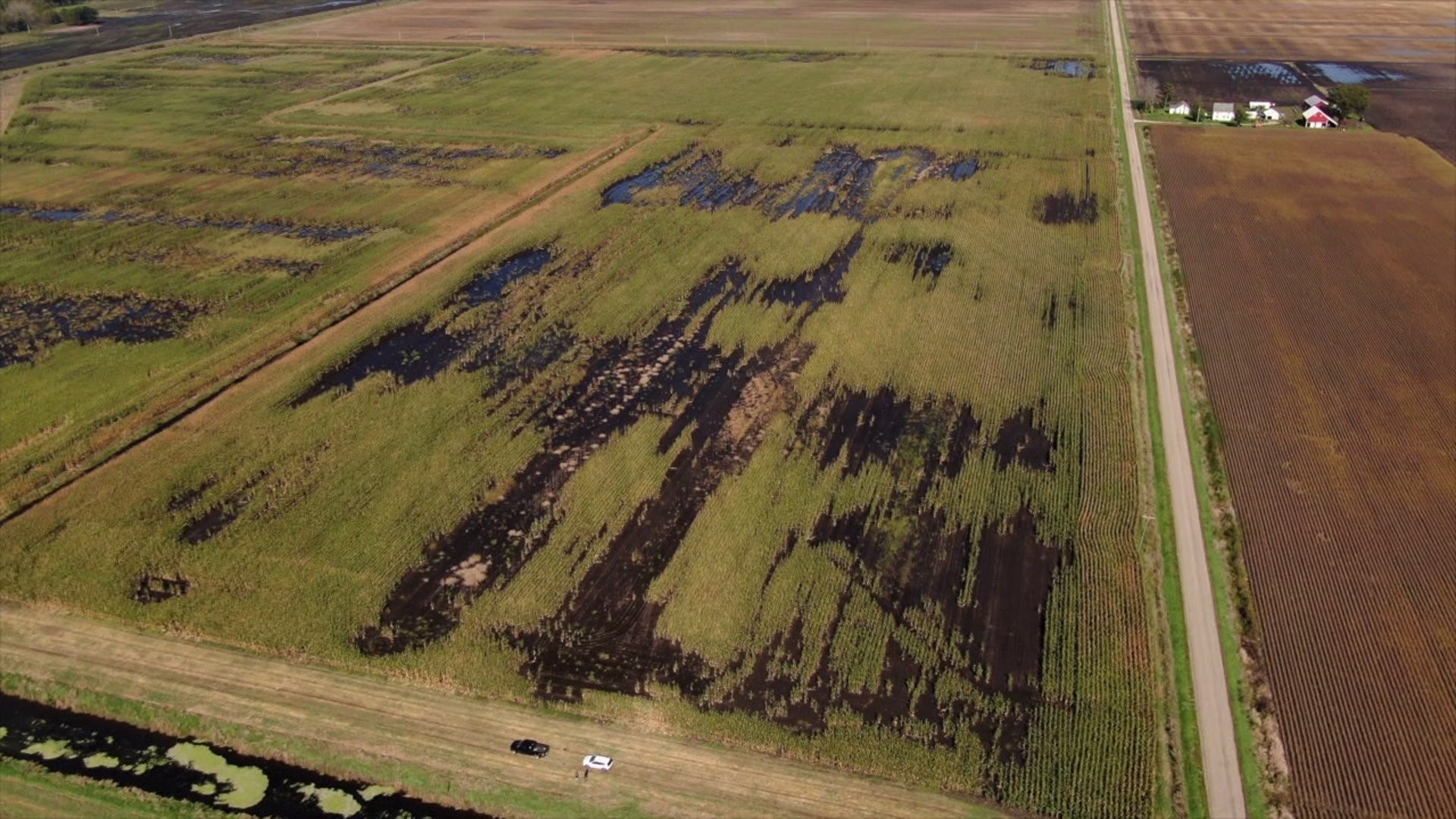HENRY COUNTY, Illinois -- Since planting season began in April, 38 inches of rain has fallen over Henry County. They usually see that over an entire year.
With temperatures nearing the 70s, Monday October 7 was one of the better days for farmers to get out in their fields for harvesting. But in Henry County, dry corn is hard to find.
Fourth generation farmer, Rock Katschnig, took the opportunity to harvest one of the first fields he planted in mid-April. He said the soil is sandier than most, allowing a majority of this year's rain to drain away.
"2019 has been a very strange year," Katschnig said. "It’s a year we’re really ready to have behind us."
But Katschnig's opportunity to harvest is one many farmers in Henry County do not have. Unfortunately for Chelsea Vandersnick, her family farm is one of the unlucky ones.
"This time of year you're not expecting to see so much green," Vandersnick said looking out at her acreage of green corn. "You're expecting pumpkin patches, brown, corn aging and you're just not getting that in most places in Henry County."
Vandersnick explained that when spring floods are followed by a rainy start to fall, the water just does not have anywhere to go.
"The drainage ditches are full," she said. "They feed into the Green River and that is on the rise."
With every river in the area already pushed past its banks, most harvests have no choice but to be pushed back.
"Harvesting this (corn) just isn't an option right now," Katschnig said pulling one of Vandersnick's husks. He said the moisture content is simply too high to sell.
But Katschnig said green corn cannot stay in the fields forever. Farmers are also racing against the clock to harvest what they can before the first frost hits.
"One problem with this green corn is if you do get a hard frost, that ear doesn’t open up to allow drying from sunlight," Katschnig said. "If you get a frost on immature corn, that husk stays tight and it’ll pretty much shut down your drying right there."
Katschnig said at some point, farmers will need to just "bite the bullet and pay the drying costs... it's going to be a slow process but it needs to come out of the field."
In order to sell, corn crops need to be near the 15% moisture mark. However, after harvesting a few rows, Katschnig was disappointed to find his crop is at 19.7%
According to the USDA, Illinois farmers have only had an average of five suitable days of fieldwork. Iowa farmers, on the other hand, saw only two suitable days.

